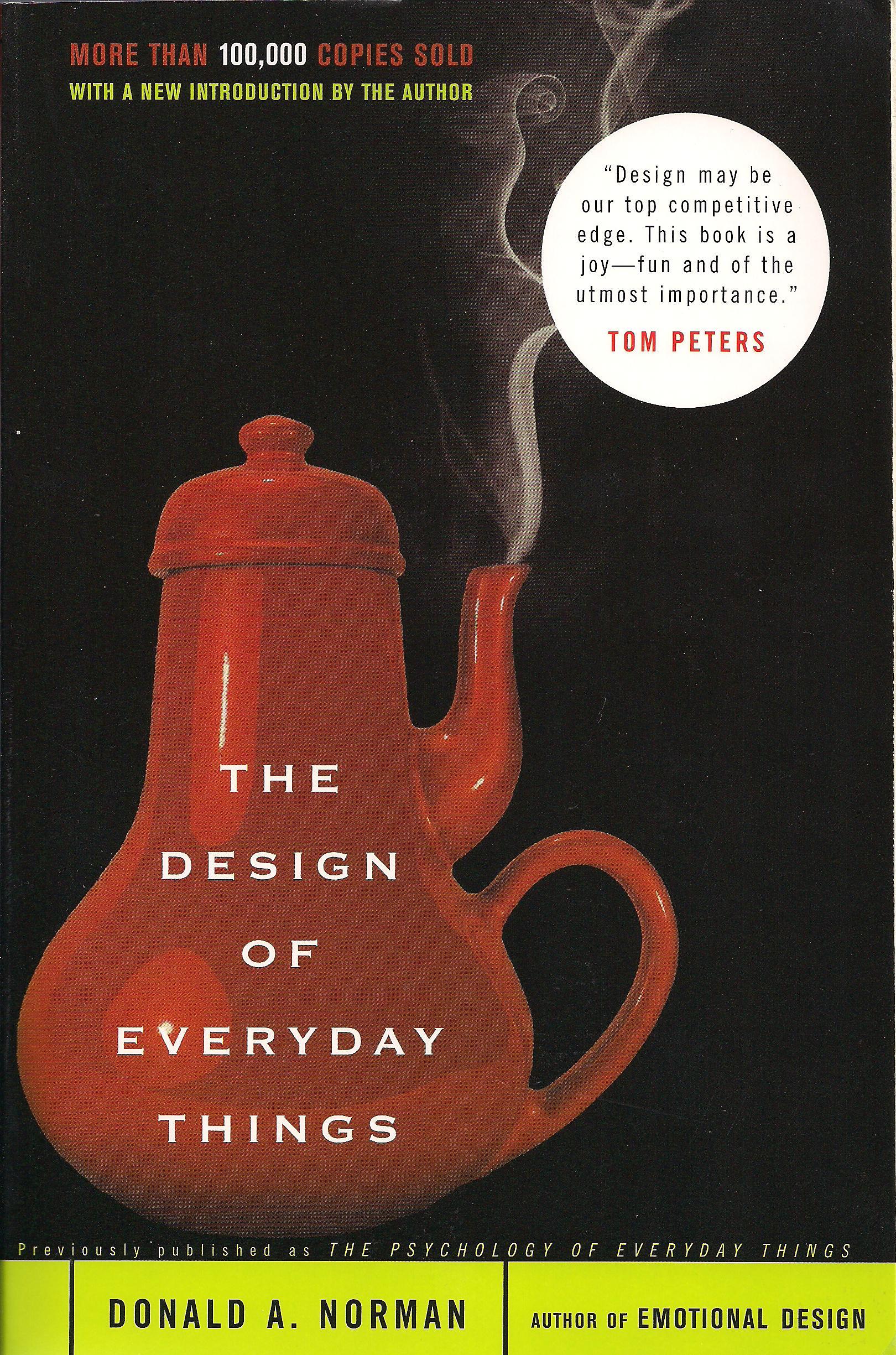The Design of Everyday Things

Good Design
In the first chapter of The Design of Everyday Things, Donald Norman pokes fun at bad designs. He mocks smooth, beautiful doors that give no indication of how to open them and complex office phones with more functions than buttons. But users rarely see these as failures of design. People are more prone to blame themselves for being unable to figure out how poorly designed things work.
When a person uses a device, she builds a mental model of it: a conjecture, an imaginary explanation of how it works. To have success with—and to enjoy using—the device, that mental model must be consistent with the way the system really works. Design, says Norman, is “an act of communication” between designers and users. In this conversation, “all communication takes place through the system image.” The “system image” is the whole appearance and operation of a device including:
- How it indicates what state it is in
- How it indicates what actions are available (and which are not)
- How it indicates the results of a potential action (before and after the action is taken)
A device that clearly communicates its state, available actions, and their consequences “disappears,” says Norman; and the user is able to “work directly on the problem at hand without having to be aware of the device.”
Tools for Design
How can a device so effectively communicate its image? Norman enumerates several tools: Visibility, Natural Mappings, Affordances, Constraints, Feedback.
- Visibility
- A device’s functions should be visible. Less frequently used functions may be hidden to reduce the apparent complexity of the device; but at all times, it should be apparent to the user what actions are available and how to perform them.
- Natural Mappings
- As much as possible, controls should bear a metaphorical relationship to the real world: they should have a “natural mapping”. (Norman draws several examples from the layouts of light switches and compares them to the positions of the lamps they control.) Any design that requires labels, diagrams, or instructions, he says, is probably faulty: unnaturally mapped.
- Affordances
- Affordances, like natural mappings, are clues (often visual) that suggest how a control may be manipulated. Handles on doors afford grasping and extruded buttons afford pushing. Affordances help users to discover how to evoke the actions a device has made visible.
- Constraints
- “Affordances suggest the range of possibilities, constraints limit the number of alternatives.” Constraints make it harder to commit errors. The mechanisms that make it difficult for you to lock your keys in your car are a kind of constraint. (In chapter four, Norman discusses four categories of constraints: physical, semantic, cultural, and logical.)
- Feedback
- There are two aspects of action: execution and evaluation. After executing an action, we watch for its effects, see that it accomplished what we expected, and adjust our expectations or intentions. Rich feedback about actions gives users confidence about a device and emboldens them to explore it.
The Process of Design
Much of The Design of Everyday Things is dedicated to the tools listed above; but its last two chapters reflect on the difficulties of the design process.
The gap between designer and user makes it just as difficult for the designer to understand the user as for the user to understand the device. Norman widens that gap with two observations:
- First, there is a difference in how designers and users approach a device: “designers often become experts with the device itself,” whereas “users are experts at the task they are trying to perform with the device.”
- A second difficulty is that “most designers…are separated from the end users by multiple layers of corporate bureaucracy, marketing, customer services, etc. These people believe they know what customers want and feedback from the real world is limited by the filters they impose.”
How can the gap be managed? To some extent it may be closed. “Much good design evolves.” Wherever possible, design and release in smaller increments. When design iterations and user feedback happen in smaller cycles, the conversation between designer and user approaches real-time.
For avoiding pitfalls in the gap between designers and users, Norman offers a few bits of advice:
- Problems dominate users’ perspective; design for the problem case. Norman devotes an entire—excellent—chapter to thinking about errors.
- Resist the temptation to design primarily for aesthetics. The primary goal of a device is rarely to “wow” an audience, to win an award, or to please a client. Keep its purpose in terms of its users in focus.
- Fight creeping featurism. “Feature creep” has become a familiar byword, but Norman offers an insightful solution to it: modularize. This is similar to the single purpose rule in programming: each function should do just one thing and each class should represent a single concept. Higher up the software model, the best applications solve a single problem—and cooperate with applications that solve related problems.
 Bob Lail
Bob Lail